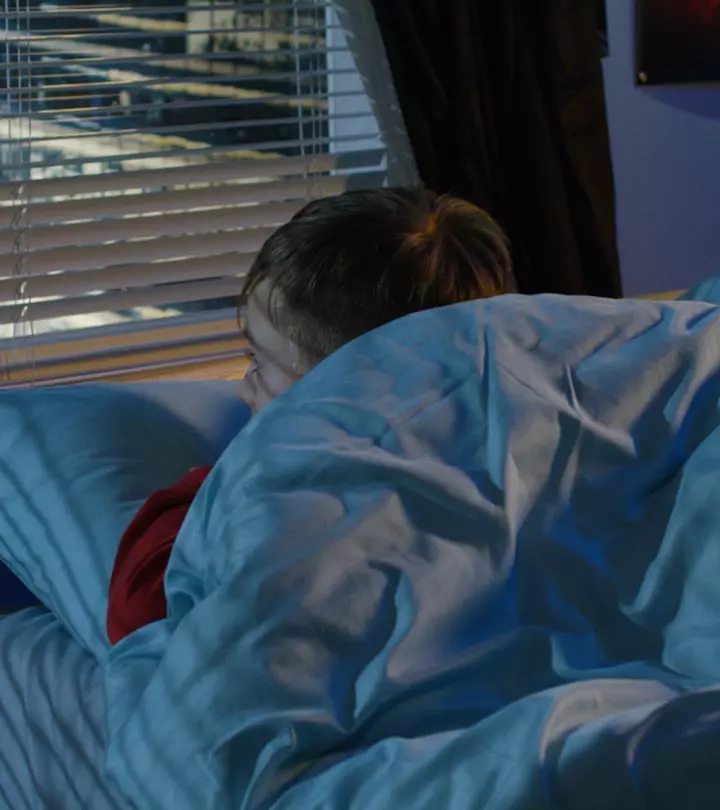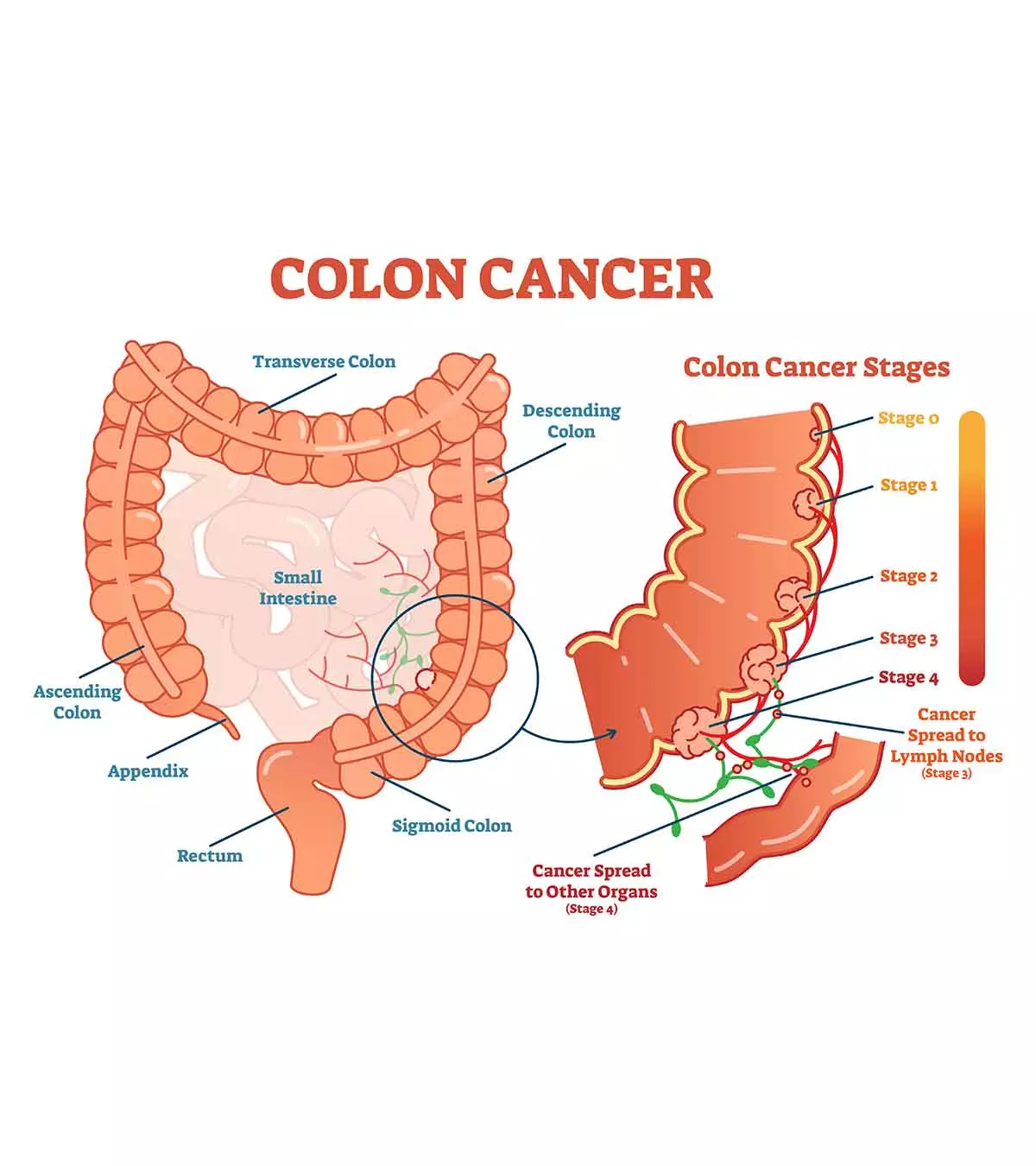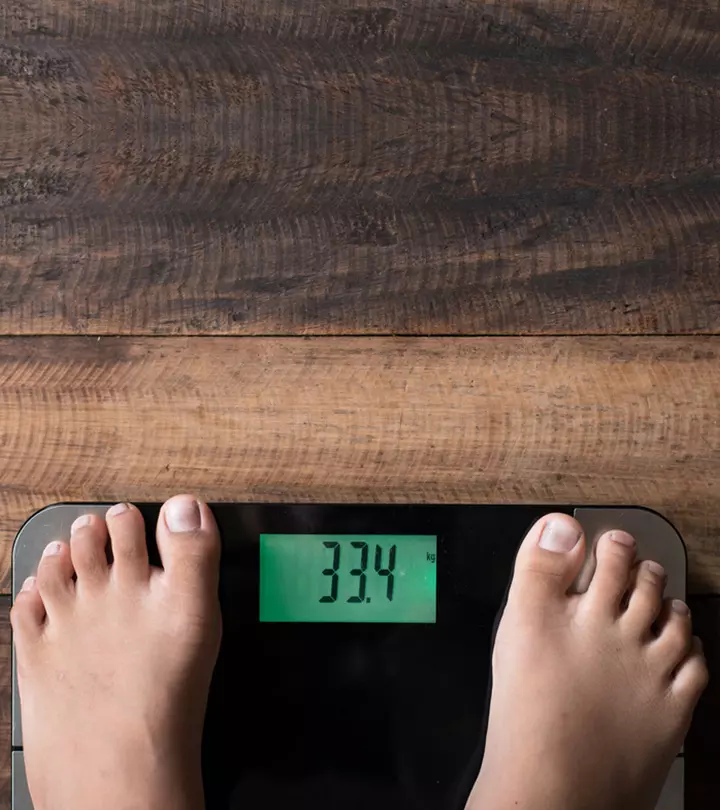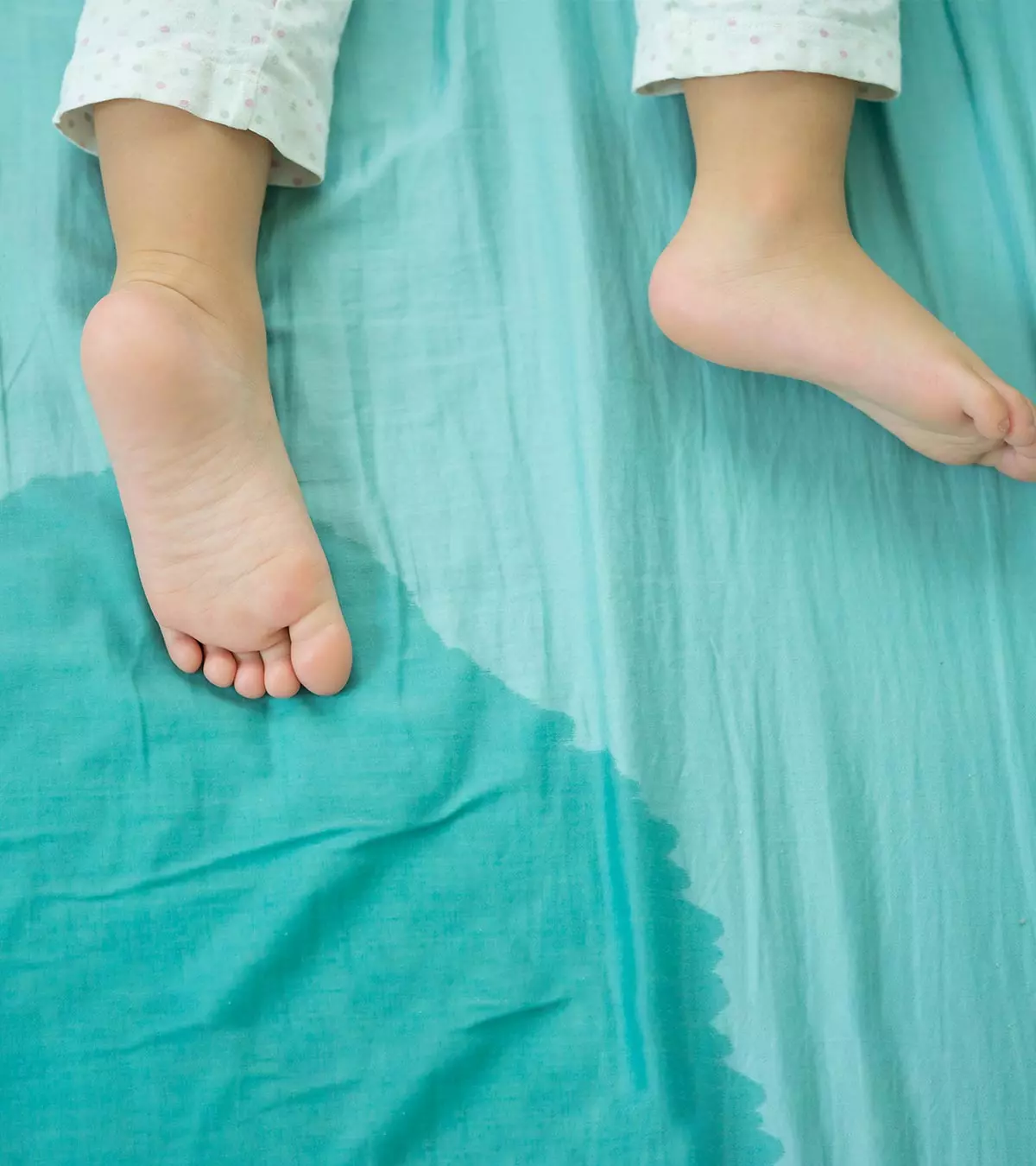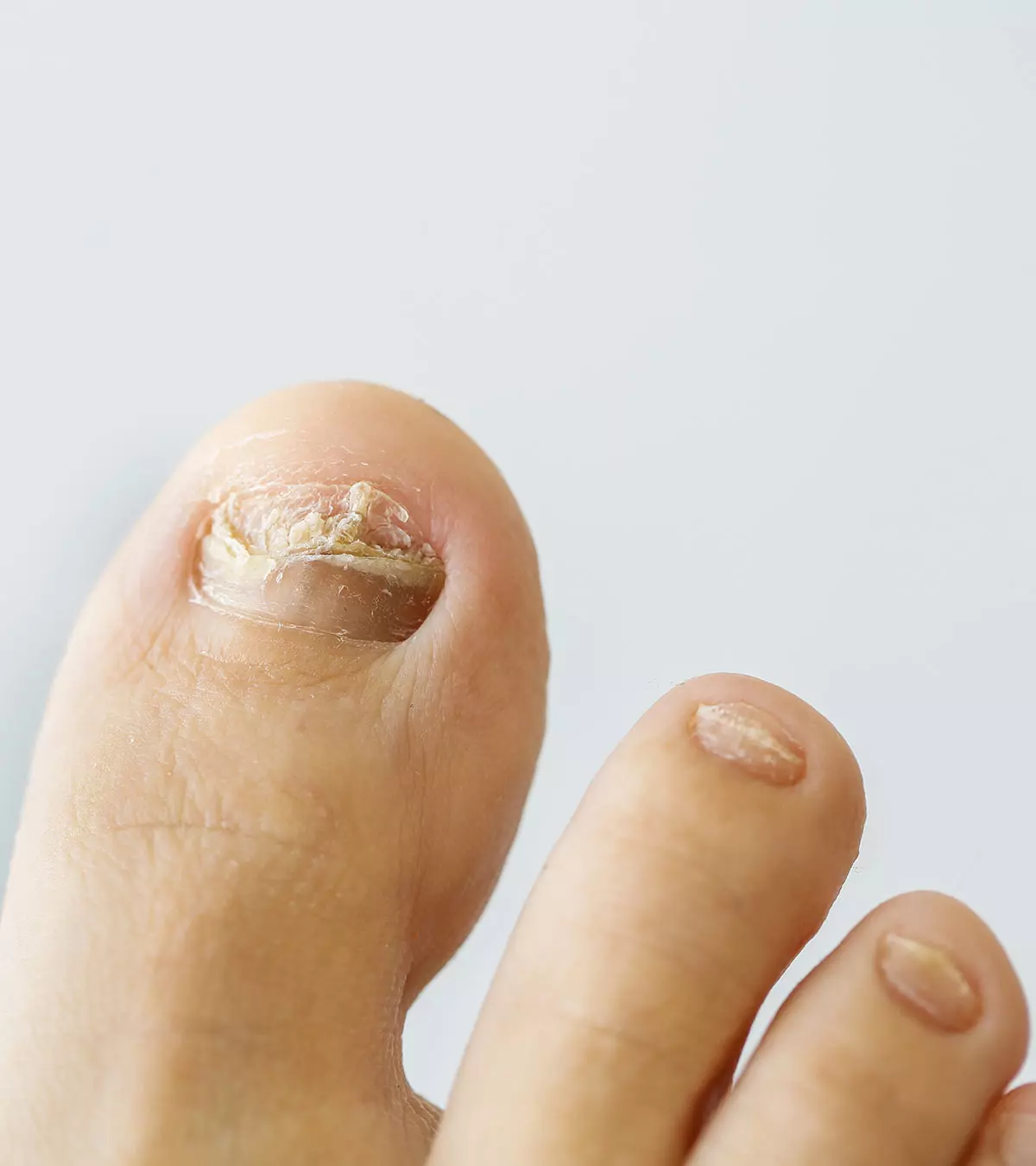
Image: ShutterStock
Onychocryptosis or ingrown toenails in kids is a common nail disorder where instead of growing outwards, the toenail begins to grow into the skin surrounding the nail. Since this ingrowth cuts the skin, the affected area can get infected and inflamed, causing pain and discomfort severe enough to impact a child’s daily activities. However, if the condition is detected early, you can manage ingrown toenails at home. According to the National Institutes of Health (NIH), 20 out of 100 people who visit a doctor for foot problems have an ingrown toenail (1). Read this post to know more about the causes of ingrown toenails and the various treatment options available to tackle the condition.

Key Pointers
- Ingrown nails, also known as onychocryptosis, occur when nails grow backward and cause infections and inflammation.
- The signs of ingrown toenails vary over four stages, including redness, inflammation, pain, nail folding, sensitivity, fluid, swelling, deformation, and difficulty walking.
- Improper nail cutting, tight footwear, excessive sweating, and poor hygiene are some reasons for ingrown nails.
- If you have a swollen or infected toe, repeated ingrown nails, unbearable pain, or a fever, it is important to see a doctor.
- Nonsurgical methods such as taping, packing, and nail braces or surgical removal can be used to treat ingrown toenails in children.
- Parents can prevent ingrown toenails in their children by ensuring they wear well-fitting shoes, trim their toenails correctly, and practice good foot hygiene.
Signs Of An Ingrown Toenail
There are four stages of an ingrown nail, and the signs vary according to the stage (2).
Stage 1:
- Reddening and inflammation at the sides of the nail.
- Folded toenail that does not cross the nail bed.
- Pain when pressure is applied on the nail.
Stage 2:
- The folding of the nail exceeds 3mm from the nail bed.
- Pain and fluid on the sides of the nail
- Sensitivity around the toenail
- Serum drainage and infection might also occur.
Stage 3:
- Pain worsens with swelling of the skin around the nail.
- The nail folds further, and if not treated at this stage, can result in deformation of the nail.
Stage 4:
- The nail folds on both sides.
- The skin around the nail swells.
- Pain increases and causes difficulty in walking (2).
Possible Causes Of Ingrown Toenails In Children
Although anyone could develop this condition, ingrown toenails are commonly observed in teenagers. Some of the possible causes include (3):
- Tight footwear: Wearing footwear that compresses the big toe towards the second toe can compress the nail and cause pressure between the nail and the lateral nail fold, possibly leading to ingrowth of that nail.
- Improper trimming: Nails should be cut across, not rounded; also, they should not be trimmed too short, as this could expose the underneath soft tissue.
- Nail infections: Fungal nail infections can thicken the toenail, and this could break off the nail spicules (small spikes on the outer nail margin). These infections can lead to increased nail thickness or changes in nail shape, making it more likely for the nail to grow into the surrounding skin.
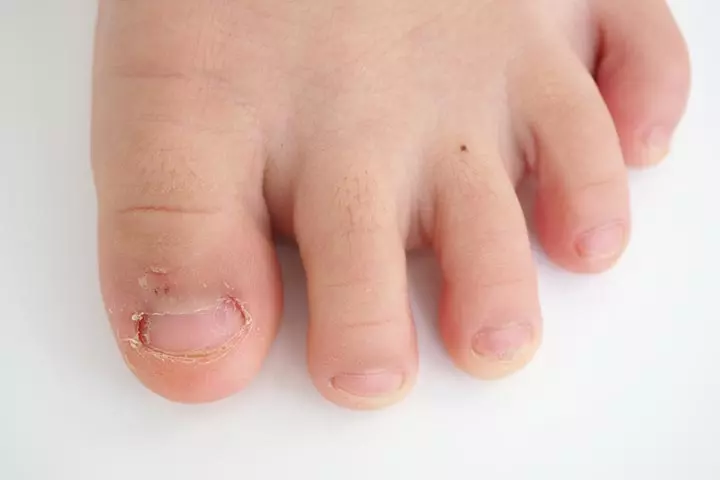
- Excessive sweating: This could be a cause of ingrown nails among teenagers. Excess sweating near the toenails could make the skin around the nail tender, making it easy for the nail to penetrate.
- Abnormalities in nail formation: Any abnormalities in the formation of the nail bed, thick nail folds, etc., could also cause the nail to grow inwards.
- Other causes: In some cases, ingrown nails are also found to be a result of intrauterine trauma, sports where kicking is involved, or genetics (4).
An anonymous blogger and a mother of two boys shares about her son’s encounter with an ingrown toenail, “After fifteen pounding hours of soccer camp last week, regularly playing soccer in the cul-de-sac and three games of 3v3 soccer on Monday night, little T.Puzzle has developed an infected, ingrown toenail. Now, I’ve never had one, so I can’t say for sure how painful it is. Even after our trip to the podiatrist and screams of fear and pain from him as the aggravating piece of toenail was cut away, he asked me if he could play soccer when we got home (ⅰ).’’
Home Remedies For An Ingrown Toenail In Children
If the ingrown toenail is in the initial stages, you can consider treating it at home. However, it must be noted that there is no scientific backing to prove their effectiveness (5).
- Soak your child’s toes in lukewarm water mixed with Epsom salt for 15 minutes and pat the toe dry with a towel. Anecdotal evidence suggests that repeating this for several days can help reduce infection and inflammation of the infected area. This process may also help soothe pain and reduce inflammation. Ensure to dry the area thoroughly after soaking to help prevent further irritation.
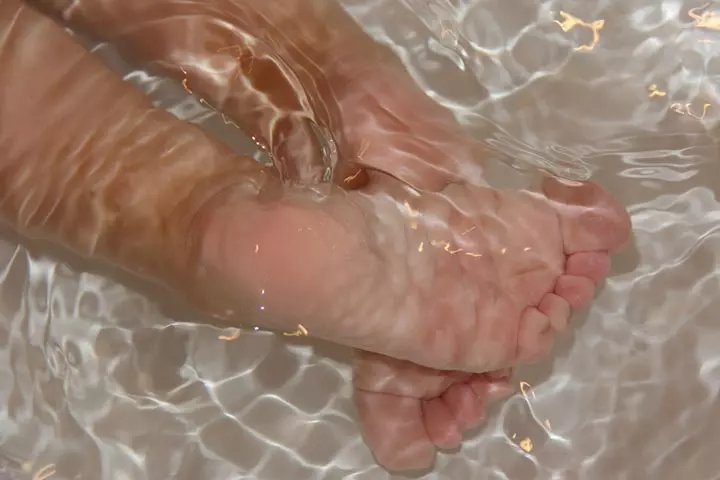
- You can also consider using an antibiotic ointment to reduce the infection.
- If your child is diagnosed with fungal infections, you could also use an over-the-counter antifungal cream (6), but do check with your doctor before trying this.
If these home remedies do not clear the ingrown nail, take your child to the doctor.
When To See A Doctor
Take your child to the doctor or a podiatrist if (7):
- The toe is swollen and inflamed
- Pus pockets have formed near the nail or on the toe
- There is repeated ingrowth of the nail
- Your child has developed a fever
- The pain is unbearable
The doctor would conduct a physical examination of the nail and determine the depth of the ingrown nail. If your child’s toenail is infected, then your doctor might request an X-ray for proper evaluation.
The treatment will be based on the diagnosis.
Treatment Of Ingrown Toenails In Children
The treatment options for ingrown toenail may vary according to the stage of the ingrown nail. Mild swelling, with no pus or drainage, can be treated with nonsurgical treatments. However, if there is swelling with signs of infection, and the ingrown nail has grown deep into the skin, then you might need surgical removal of the nail (8).
In addition to medical treatment, lifestyle changes can aid in recovery. Ensuring your child wears breathable footwear and maintains good foot hygiene can help prevent recurrence. Sometimes, your child’s doctor might also prescribe antibiotics or antifungals to cure bacterial or fungal nail infections in children.
Nonsurgical treatments for ingrown toenails
1. Taping: In this method, an elastic strip of tape that is 15 to 25mm wide and 5cm long is used. One end of the tape is fixed to the side where the ingrown nail is formed, while the other end is pulled tight and taken around the toe and attached to the other end of the toe (9).
It is advised to change the tape daily until the ingrown tail is exposed, which usually takes up to four to eight weeks.
If there is sweat and pus, then it could interfere with the sticking of the tape, so you should clean the toe area before applying the tape. Your doctor might also prescribe antibiotics simultaneously to reduce the infection (10).
2. Packing: This method could be a little aggressive but is said to provide quick relief. So, it is best to estimate if your child could take the pain before trying it. In the packing method, a wisp of cotton is inserted in the corner of the nail fold to prevent it from further folding. You can soak the cotton in disinfectant and change it daily (9).
Once your child is no longer experiencing pain (and the nail is not digging into the skin anymore), you can stick the cotton in the same position with glue and leave it for a week.
3. Nail braces: These are mechanical devices that exert force and open up the curved nail. These nail braces come with two tips that should be placed on either edge of the ingrown nail. There is a plate in the center with a screw, as you start tightening the screw, the center plate exerts force in the nail, thus straightening it (9).
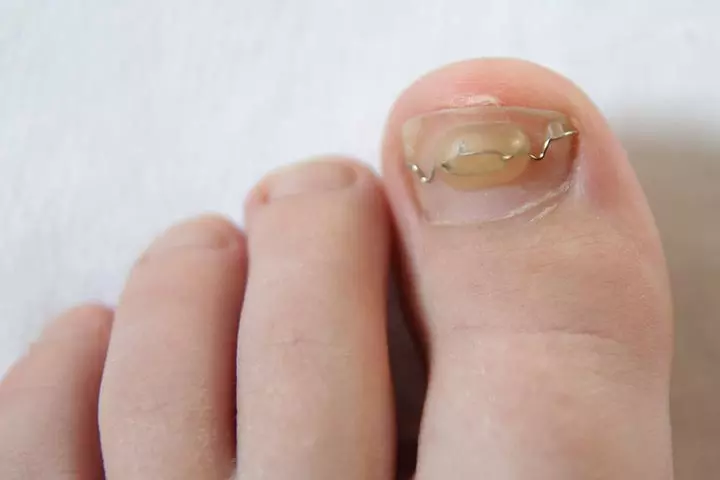
These nonsurgical techniques are helpful during the first and second stages of ingrown toenails when there is less inflammation and no pus discharge. But, if your child’s ingrown nail is in the third or fourth stage, then your doctor might recommend surgical intervention.
 Quick fact
Quick factSurgical procedures for ingrown toenail include
4. Avulsion of the entire nail: Here, the entire nail bed is removed, giving time for the inflammation and the swelling to subside before the new nail grows back (9).
5. Wedge excision of a nail edge: In this method, soft tissue around the corner of the ingrown nail is removed, and the folded nail is straightened (9).
6. Chemical nail avulsion: Chemicals such as phenol sodium hydroxide are used to dissolve the bond between the nail and the nail tissue, and then the entire nail is removed.
7. Laser nail avulsion: Using a carbon dioxide laser, the ingrown nail is removed (11).
After the surgical procedure, post-operative care is necessary to speed up the recovery and healing process and includes:
- Resting and minimizing physical activity
- Follow the prescribe wound care
- Ask your child to wear open-toed and loose-fitting footwear post the surgery
- Clean the wound regularly and change the dressing. This might prevent the bandage or dressing from sticking to the wound.
According to a study performed on the surgical methods on children, wedge excision was found effective (12). However, Your child’s doctor will determine the type of surgical method after examining the toenail.
Can You Prevent An Ingrown Toenail?
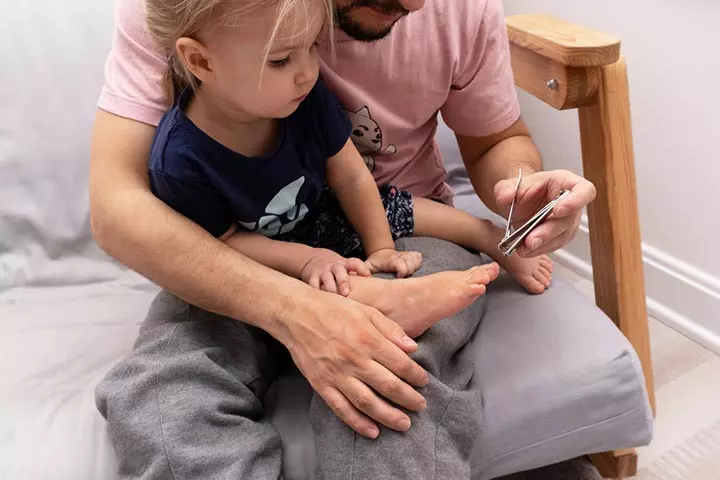
With simple precautions and care, you might be able to prevent ingrowth of toenails or their repeated occurrence. Here is how (13):
- Always cut your child’s toenails straight across, and never leave any sharp edges.
- Encourage them to wear loose-fitting footwear that gives the toes ample space to breathe and does not put pressure on them.
- Teach your children proper foot hygiene so that they do not catch infections.
- Whenever you notice any curvature in the nail, use a small strip of dental floss to elevate the tip and clip it off.
- Encourage your child to avoid excessive foot perspiration by wearing moisture-wicking socks.
- If your child has excessive perspiration in the feet, then make sure they wash their socks and change them from time to time.
 Quick fact
Quick factComplications of Ingrown Toenails
When treated in time, an ingrown toenail may not cause any serious complications. However, if left untreated, it could lead to severe infection, which can spread to the bone. In children with diabetes, ingrown toenails can cause infections that do not heal quickly (14).
Frequently Asked Questions
1. Will a child’s ingrown toenail eventually grow out?
Ingrown toenails do not resolve on their own without treatment in most cases. You may treat your child’s ingrown toenails at home; however, a severe infection of ingrown toenails requires medical intervention (15).
2. Does hydrogen peroxide help ingrown toenails in kids?
Hydrogen peroxide is used as a disinfectant during ingrown toenail treatment to reduce the chances of infection (16). It is not a direct cure for an ingrown toenail.
3. How long does it take for an ingrown toenail to heal in a child?
With adequate and timely care and treatment, an ingrown toenail in a child heals in a period of two weeks (17).
4. Can ingrown toenails indicate an underlying health condition in kids?
Children with underlying conditions such as diabetes, poor blood circulation, nail infections, and severe nerve damage in the legs are at an increased risk of developing ingrown toenails and require medical attention (5).
Ingrown toenails in kids is a manageable nail disorder that can be treated at home if detected early. Wearing tight footwear, trimming nails improperly, and abnormality in nail formation are some of the factors that may cause it. Soaking foot in lukewarm water mixed with Epsom salt and using antibiotic ointment are simple home remedies that can help treat ingrown toenails in the initial stages. Following proper foot hygiene can also aid in the prevention of the condition. However, if the pain becomes unbearable or the toe turns swollen and inflamed, consult your doctor promptly. Prevent recurrence by encouraging children to wear loose-fitted shoes and keeping the toenails short.
Infographic: A Step-By-Step Guide To Cutting A Child’s Nails
It is essential to know the right way to cut your child’s nails to reduce the chances of ingrown nails. We bring you this infographic on how to cut your child’s nails to prevent ingrown nails. Save it for future reference.
Some thing wrong with infographic shortcode. please verify shortcode syntax
Watch this concise 3D animation video that demonstrates effective home remedies for treating and removing an ingrown toenail. Obtain clear and easy-to-follow instructions for optimal home care and surgical extraction.
Personal Experience: Source
MomJunction articles include first-hand experiences to provide you with better insights through real-life narratives. Here are the sources of personal accounts referenced in this article.
ⅰ. (Toe)tal Commitment;
https://writesforallmommies.com/2012/06/
References
- Overview: Ingrown Toenail; Institute for Quality and Efficiency in Health Care
- Alfonso Martínez-Nova, Raquel Sánchez-Rodríguez, and David Alonso-Pena; A New Onychocryptosis Classification and Treatment Plan; Research Gate
- Ingrown toenail; DermNet
- Niti Khunger, Rajat Kandhari; Ingrown toenails; Indian Journal of Dermatology, Venerology and Leprology
- Ingrown Toenails; Cleveland Clinic
- Foot health: What to do about an ingrown toenail; Harvard Health Publishing
- Ingrown Toenail in Children: Care Instructions; Kaiser Permanente health
- Ingrown Toenails; Nemours Kid’s Health
- Eckart Haneke; Controversies in the Treatment of Ingrown Toenails; NCBI
- Meiko Tsunoda, and Koichi Tsunoda; Patient-Controlled Taping for the Treatment of Ingrown Toenails; NCBI
- Deepika Pandhi, Prashant Verma; Nail avulsion: Indications and methods (surgical nail avulsion); Indian Journal of Dermatology, Venerology and Leprology
- S Mitchell, CR Jackson, and D Wilson- Storey; Surgical Treatment of ingrown toenails in children: what is the best practice?; NCBI
- Toenail – Ingrown; American Academy of Pediatrics
- Ingrown toenails; Healthdirect Australia
- What To Do About Your Child’s Ingrown Toenail; University of Utah Health
- Ingrown Toenail Treatment; Sutter Health
- Toenail – Ingrown; Seattle Children’s Hospital
- Ingrown Toenails in Children; American College of Foot and Ankle Surgeons
- Ingrown toenail; NHS
Community Experiences
Join the conversation and become a part of our nurturing community! Share your stories, experiences, and insights to connect with fellow parents.
Read full bio of Dr. Thulja Trikamjee
Read full bio of Dr. Ritika Shah
Read full bio of Swati Patwal
Read full bio of Ghazia Shah







